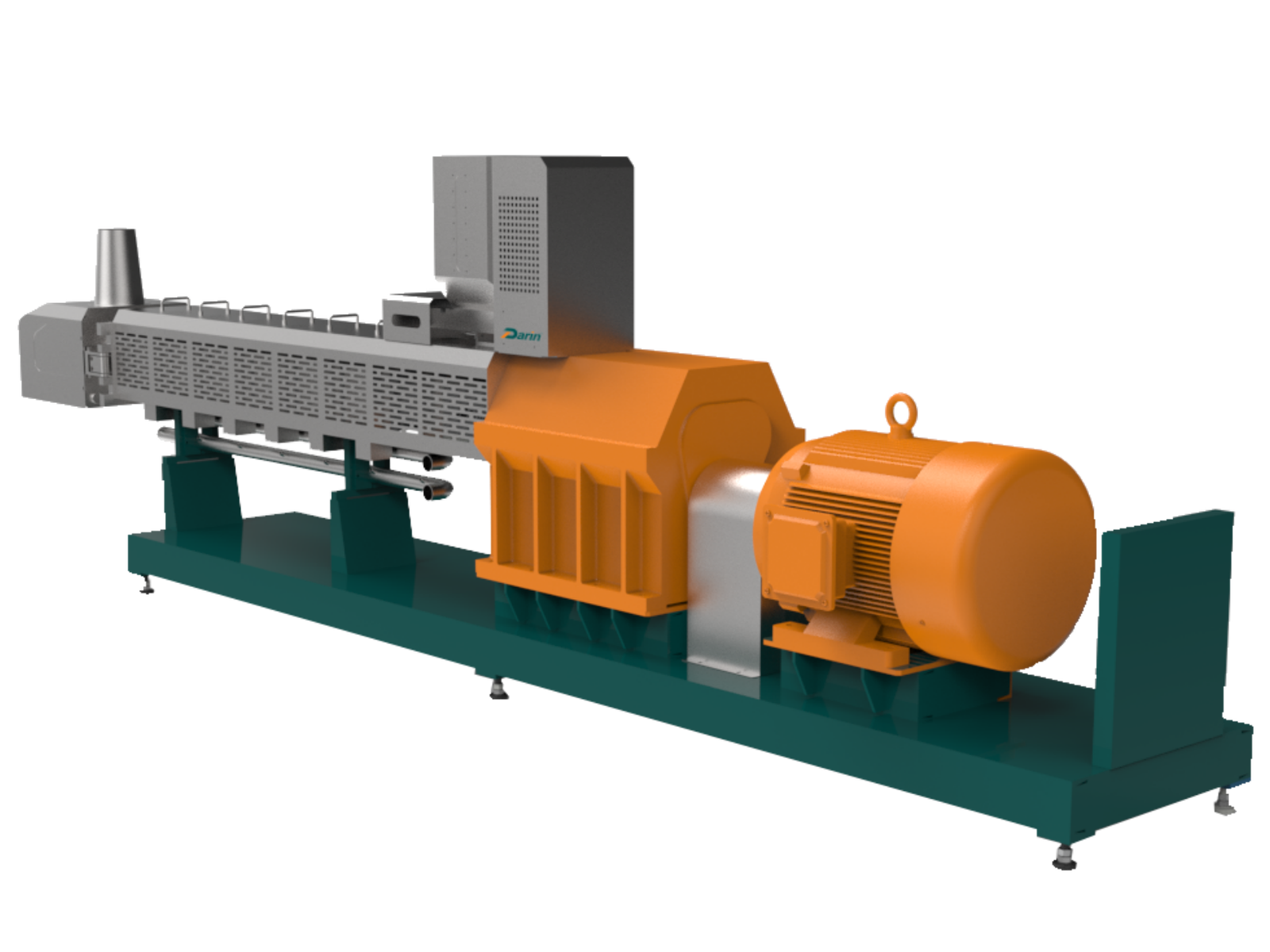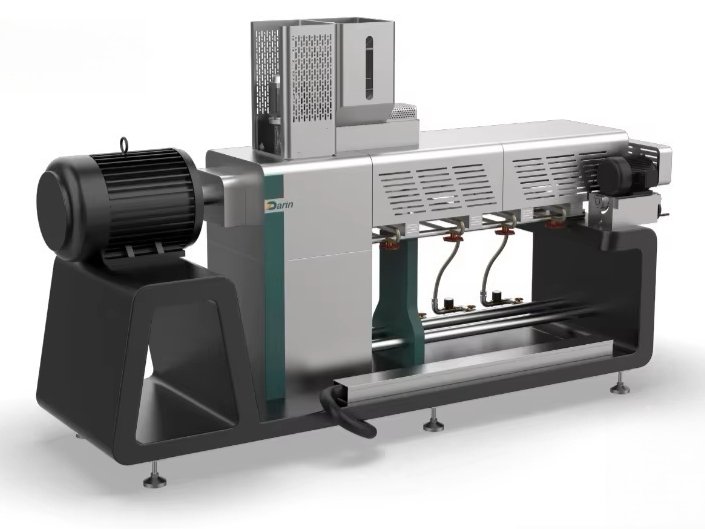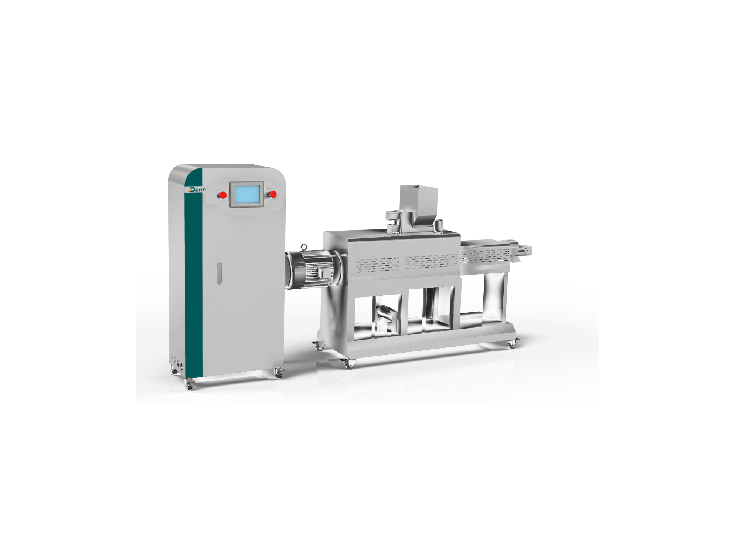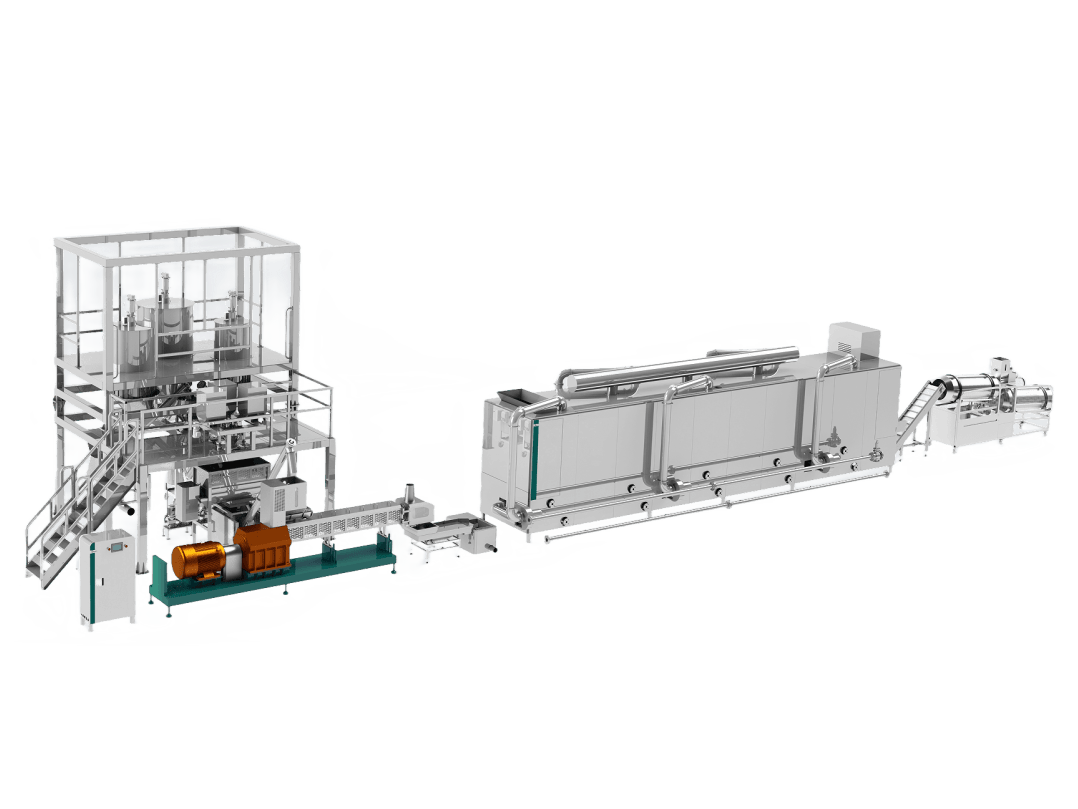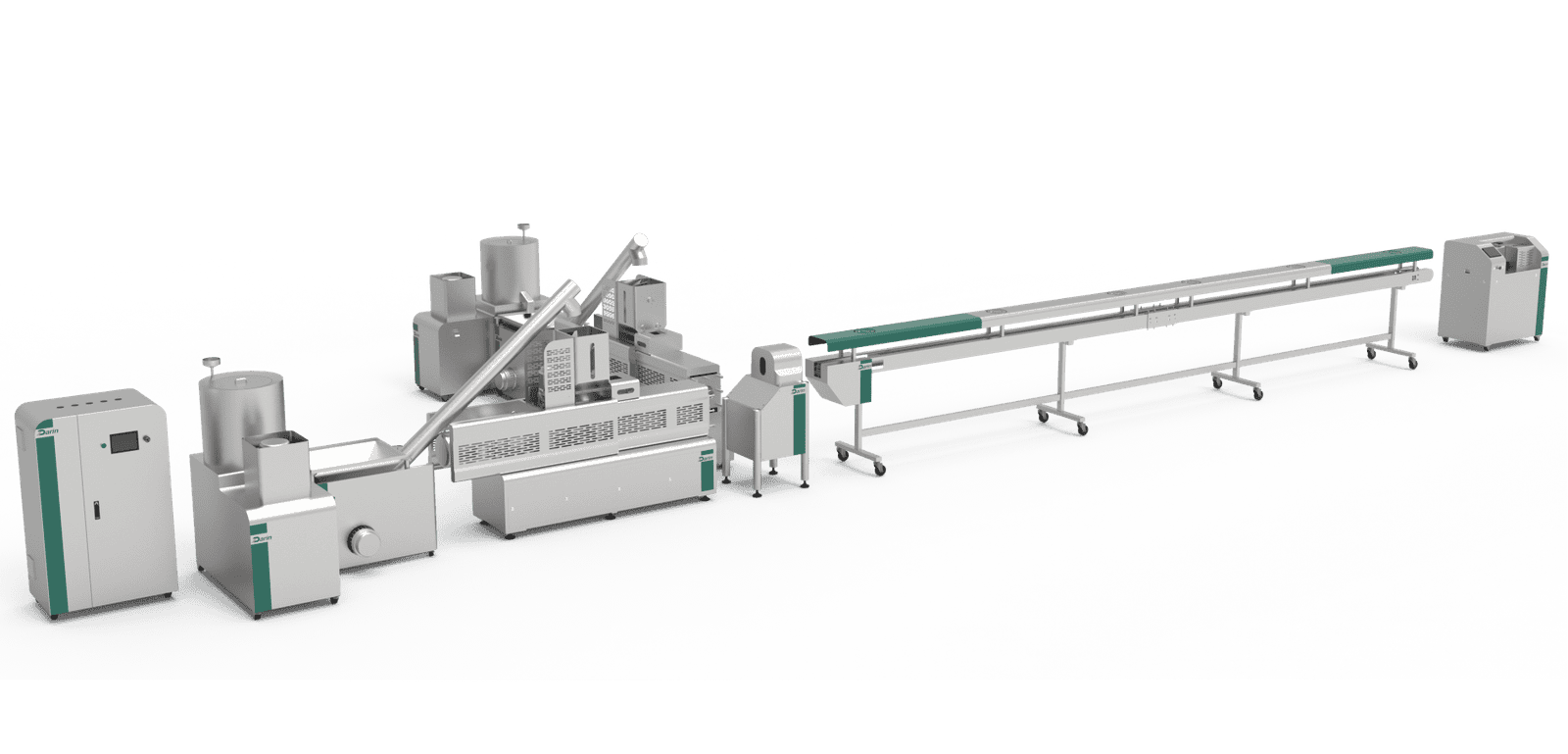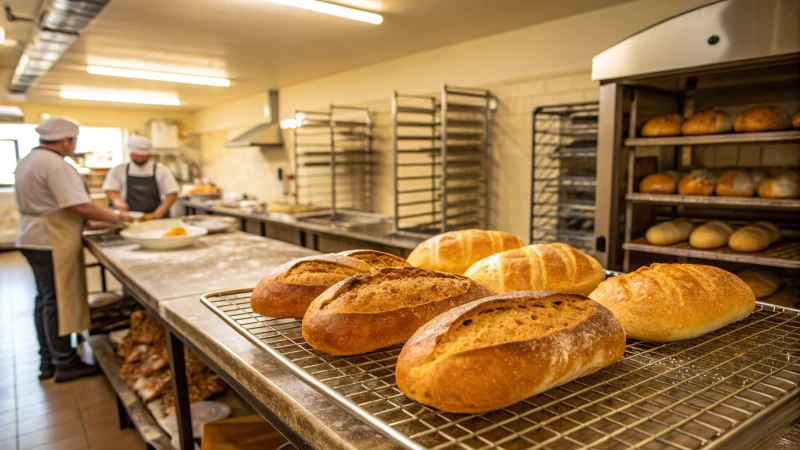
Ever wondered how those delicious treats on your plate are more than just tasty morsels?
Baking and drying are crucial in the bakery industry as they prevent microbial growth and enhance product texture and flavor. These processes involve applying heat to reduce moisture, thereby inhibiting bacteria and extending shelf life, which ensures compliance with food safety standards.
I remember the first time I realized the magic behind baking and drying—it was during a family picnic when my aunt shared her secret to the perfect, long-lasting cookies. She explained how these methods not only created delightful textures but also played a crucial role in keeping the cookies safe to eat for days. This sparked my curiosity about how such simple processes can wield so much power over food safety and quality.
Delving deeper, it's fascinating to see how baking and drying aren't just about removing moisture; they're about creating a barrier against harmful microbes that can spoil food. This not only protects consumers but also elevates the culinary experience by ensuring that every bite is as fresh as intended. Whether in my kitchen or a large-scale bakery, these processes ensure that quality and safety go hand in hand.
Baking prevents microbial growth in baked goods.Prawda
Baking reduces moisture, inhibiting bacteria and extending shelf life.
Drying decreases the flavor of bakery products.Fałsz
Drying enhances flavor by concentrating ingredients and reducing moisture.
How does baking prevent microbial growth?
Ever thought about how baking turns raw dough into safe, scrumptious goodies?
Baking prevents microbial growth primarily through high temperatures that destroy bacteria and other microorganisms. The heat denatures proteins and dehydrates microbial cells, making baked goods safer for consumption.

The Science Behind Baking's Microbial Defense
I remember the first time I understood the magic of baking. It was a chilly afternoon, and I was attempting my grandmother's famous bread recipe. As I watched the dough rise and transform in the oven, I realized there was more at play than just heat and flour. Baking isn't just about creating delicious treats; it's a science of safety.
Baking involves cooking food at temperatures between 300°F and 500°F (149°C to 260°C). This intense heat is a formidable adversary to most microorganisms like bacteria, molds, and yeasts. I learned that as the temperature rises, it denatures proteins in microbial cells, obliterating their structure and ensuring our food is safe.
Moreover, the heat causes moisture within the food to evaporate. Microorganisms require water to thrive, and by reducing moisture, baking creates an inhospitable environment for their growth. This dehydration process is crucial for preventing mold and yeast in bread and other baked goods.
| Temperatura | Effect on Microbes |
|---|---|
| 140°F (60°C) | Inactivates most yeasts and molds |
| 160°F (71°C) | Kills most bacteria |
| 212°F (100°C) | Water boils; most pathogens destroyed |
| 300°F (149°C) | Common baking temperature; ensures safety |
Different Baking Methods and Their Impact
Different baking techniques can affect how well microbial growth is controlled. Convection baking circulates hot air around the food, ensuring even cooking and minimizing cold spots where microbes might survive. Traditional baking relies on radiant heat from the oven walls, which might not be as effective for larger or densely packed items.
And let's not forget about the role of ingredients like sugar and salt. They don't just add flavor but also help inhibit microbial growth by creating a hypertonic environment that draws moisture out of microbial cells through osmosis.
Baking Beyond Safety: Enhancing Flavor and Texture
Beyond keeping our food safe, baking enhances flavors and textures through chemical reactions like Maillard browning and caramelization. These reactions not only deepen flavors but also make baked goods visually appealing.
By understanding the science of baking1, bakers can fine-tune recipes for both safety and sensory qualities. Advanced techniques involve tweaking ingredients or adjusting temperature and time to achieve specific results while ensuring microbial safety.
Further Considerations2
While baking significantly reduces microbial presence, post-baking handling is crucial to avoid recontamination. Proper storage—like using airtight containers or refrigeration—can maintain safety by minimizing exposure to contaminants. Additionally, following food safety guidelines3 can help keep baked products safe and high-quality over time.
Baking at 300°F kills most bacteria.Prawda
At 300°F, the heat is sufficient to kill most bacteria, ensuring food safety.
Convection baking creates cold spots where microbes survive.Fałsz
Convection baking circulates hot air evenly, reducing cold spots and microbial survival.
How Does Drying Affect Texture and Flavor?
Ever wondered why dried fruits taste so intense or why jerky is so irresistibly chewy?
Drying alters food's texture by removing moisture, resulting in a firmer or crispier feel. It also concentrates flavors, making them more intense. Different drying methods yield varying effects on both texture and flavor.

How Drying Methods Affect Texture
You know, there's something almost magical about the way drying transforms food. Think about those apple chips I once made—my kitchen smelled like a crisp autumn day. Drying took away the moisture, turning them into these delightful crunchy snacks. But not all drying methods are the same. Sun drying, for example, gives fruits a leathery feel, perfect for chewy snacks. On the other hand, freeze-drying keeps everything intact, which is why those freeze-dried strawberries in your cereal look just as plump as fresh ones.
A comparison table might look like this:
| Metoda suszenia | Effect on Texture |
|---|---|
| Sun Drying | Leathery, slightly soft |
| Oven Drying | Crispier, potential brittleness |
| Liofilizacja | Maintains original structure |
Liofilizacja4, for example, removes almost all water content at low temperatures, preserving the original cellular structure and thus maintaining the initial texture.
Impact on Flavor
Let's talk flavor. Remember the last time you had dried mango? How it seemed like a burst of sunshine in every bite? That's because drying amplifies flavors by concentrating them. So whether you're sprinkling dried herbs into a stew or savoring a piece of jerky, it's all about that intensified taste.
- Herbs: The transformation from fresh to dried can turn basil into a powerhouse of flavor.
- Mięso: Jerky retains a concentrated savory profile.
Different drying techniques also influence the flavor. Sun drying might infuse a subtle earthy note due to environmental exposure, whereas freeze-drying preserves the purity of the original taste.
Factors Influencing Texture and Flavor Changes
There are several factors at play when drying affects texture and flavor:
- Temperatura: Have you ever baked something and noticed how higher heat can caramelize sugars, adding complexity to flavors but sometimes toughening the texture?
- Humidity: Ever notice how less humid air can make things crispier5?
Choosing the right drying method depends on what you're aiming for in terms of texture and flavor. Next time you're in the kitchen, think about how different foods react to drying—whether it's transforming juicy fruits through liofilizacja6 or crafting perfect dehydrated meat snacks. Your culinary adventures await!
Freeze-drying maintains original food texture.Prawda
Freeze-drying preserves cellular structure by removing water at low temperatures.
Sun drying makes foods crispier than oven drying.Fałsz
Sun drying results in a leathery texture, while oven drying can be crisper.
How Do Baking and Drying Affect Nutritional Value?
Ever wondered how baking and drying can change the nutritional content of your favorite foods? Join me on a journey through the science behind these cooking methods and discover practical tips for preserving those essential nutrients.
Baking and drying affect nutritional value by altering nutrient availability and concentration. While baking can degrade some vitamins, it may enhance mineral absorption. Drying reduces water content, concentrating nutrients but potentially degrading heat-sensitive compounds.

The Chemistry of Baking
When I first started baking, it was all about the thrill of creating something delicious. But as I dug deeper, I realized it's a bit like chemistry class—how heat affects the nutrients in our food. Baking involves exposing food to dry heat, typically at temperatures ranging from 300°F to 400°F. This method can significantly alter the nutritional content of foods. For instance, certain vitamins such as vitamin C and some B vitamins are heat-sensitive and may degrade during pieczenie7. However, baking can enhance the absorption of minerals like calcium and iron, making them more bioavailable.
| Składnik odżywczy | Effect of Baking |
|---|---|
| Witamina C | Często zmniejszone |
| Witaminy z grupy B | Potentially degraded |
| Minerały | Absorption may increase |
Drying: Concentrating or Degrading Nutrients?
Drying is another fascinating process I explored when trying to make my own dried fruits and veggies. It removes water from food, thereby concentrating its nutrients. However, this process may also lead to the degradation of heat-sensitive nutrients. Proteins and carbohydrates generally remain stable, while vitamins like A, C, and E can suffer significant losses due to oxidation and heat exposure. The effectiveness8 of nutrient retention largely depends on the drying method used.
- Air Drying: Slow process, may retain more nutrients.
- Sun Drying: Can lead to significant vitamin loss due to prolonged exposure to UV rays.
- Freeze Drying: Preserves most nutrients by using low temperatures.
Nutrient Retention Strategies
I've learned a few tricks along the way to help maximize nutritional value during baking and drying:
- Use lower temperatures where possible.
- Opt for shorter cooking times to minimize nutrient loss.
- Consider freeze-drying over sun or air drying for better nutrient preservation.
- Pair foods rich in certain nutrients with ingredients that enhance absorption, such as combining vitamin C-rich foods with iron-rich ingredients.
Navigating the world of cooking methods and nutrient retention can feel like unraveling a mystery. But with some exploration and curiosity, it's possible to discover healthier food preparation practices. For more insights on how these processes interact with various nutrients, check out resources that delve into nutrient interactions9.
Baking enhances mineral absorption in foods.Prawda
Baking can increase the bioavailability of minerals like calcium and iron.
Freeze drying leads to significant vitamin loss.Fałsz
Freeze drying preserves most nutrients due to its use of low temperatures.
What are the Best Practices for Ensuring Quality Control in Baking?
Imagine baking the perfect loaf every single time. That’s what quality control can do for your bakery.
To ensure quality control in baking, focus on ingredient testing, precise measurements, equipment maintenance, and staff training. Implementing these strategies helps maintain consistent product quality and customer satisfaction.

Importance of Ingredient Testing
I once spent a whole afternoon picking the perfect apples for a pie, knowing that the right ingredients make all the difference. That's exactly why ingredient testing is crucial in baking. Regularly inspecting flour, sugar, and other essentials for freshness and purity is like having that same level of care for every baked good. By setting up a standard testing procedure10, you ensure each batch tastes just like the one that won hearts before it.
Precision in Measurements
I remember trying a new recipe and thinking, "A pinch of salt? How much is that really?" Turns out, precision is king in baking. Using digital scales and measuring cups isn’t just about following rules—it's about ensuring every cake rises as it should. Implementing a calibration routine11 means your tools are always on point, just like your results. Even a tiny change can alter taste or texture.
| Measurement Tool | Frequency of Calibration |
|---|---|
| Digital Scale | Tygodnik |
| Measuring Cups | Miesięczny |
| Thermometers | Codziennie |
Equipment Maintenance
If you've ever had a mixer conk out mid-batch, you know the importance of keeping equipment in top shape. Regular maintenance prevents those unwelcome surprises and keeps the magic happening smoothly. Schedule routine checks for ovens, mixers, and refrigeration units. Having a maintenance checklist12 means you won’t miss out on those little repairs that keep things running.
Staff Training and Development
There’s a special kind of joy in watching a team member nail a new technique. Investing in staff training isn’t just about improving product quality—it's about inspiring confidence and skill growth. Conduct workshops on hygiene standards and proper techniques, creating a training module13 that's tailored to your bakery's needs. When your team feels empowered, your products shine with quality.
By focusing on these areas, I’m laying a foundation of excellence and consistency in my bakery operations. This isn't just about baking; it’s about creating moments of joy with every bite.
Regular ingredient testing ensures baking consistency.Prawda
Testing ingredients helps maintain consistent taste and texture.
Measuring cups require weekly calibration in baking.Fałsz
Measuring cups are calibrated monthly, not weekly, for accuracy.
What Makes Baking Techniques Vary Across Different Products?
Ever wondered why your bread turns out perfectly chewy while your cakes are fluffy and light? It's all in the baking techniques!
Baking techniques differ across products due to variations in ingredients, desired textures, and cooking times. For example, bread requires kneading for gluten development, while cakes rely on precise ingredient ratios for fluffiness.

The Role of Ingredients in Baking
Diving into baking, it's fascinating to see how each ingredient has its own part to play. I've always marveled at how yeast, for example, breathes life into bread dough. Watching it rise reminds me of my first attempt at baking bread—I was glued to the oven window like a kid watching TV! Cookies, on the other hand, are my go-to comfort food, relying on the quick action of baking powder for that perfect crunch.
| Product | Key Ingredient | Technika |
|---|---|---|
| Bread | Yeast | Fermentation |
| Cookies | Baking Powder | Quick Mixing |
| Cakes | Jajka | Creaming Method |
Understanding Texture Variations
Ah, texture! It's the secret sauce of baking. The first time I nailed that chewy texture in bread, I felt like I'd won a medal. It's all about kneading, letting the gluten work its magic. Cakes were another story—they needed a gentler touch to stay airy. And those buttery layers in pastries14? Achieved by carefully laminating dough with butter. It's like creating art with flour and fat.
Cooking Time and Temperature Differences
Timing is everything—just like in life. I learned this the hard way when my biscuits came out more like rocks than treats. High heat is their best friend, helping them rise quickly. But then there's cheesecake, which needs a slow and steady approach to prevent cracks. I remember my first attempt; it looked more like a lunar surface than dessert.
Slow baking15 is suitable for items like cheesecakes to prevent cracking by reducing sudden temperature changes.
Special Techniques for Unique Products
Certain delicacies demand extra care. Meringues need a gentle hand for whisking and low heat for drying—patience is key here. My heart still races each time I make soufflés, waiting anxiously for them to rise perfectly without collapsing. Baking these is like holding your breath underwater, hoping you'll surface with triumph.
These examples showcase how baking techniques18 are tailored to fit the unique requirements of each type of product, ensuring the best possible results. Each method is a dance between science and art, creating those delicious wonders we love.
Bread uses baking powder as a leavening agent.Fałsz
Bread typically uses yeast, not baking powder, for leavening.
Cakes require gentle folding to stay airy and light.Prawda
Gentle folding prevents deflation, maintaining the cake's light texture.
What Are the Latest Innovations in Baking Technology?
Ever wondered how a touch of AI or the magic of 3D printing is transforming baking?
The latest innovations in baking technology include smart ovens with AI capabilities, 3D food printing, and sustainable ingredient sourcing. These advancements enhance efficiency, precision, and environmental sustainability in the baking industry.

Smart Ovens and AI Integration
I remember my first attempt at baking a perfectly golden loaf of sourdough. The anticipation, the careful kneading—only for it to come out undercooked in the middle. If only I had access to today's smart ovens back then! These marvels use artificial intelligence (AI) to make on-the-fly adjustments, ensuring every bake comes out just right. Imagine an oven that learns your favorite recipe over time and tweaks its own settings to guarantee a perfect result every time. It's like having a personal assistant dedicated solely to your baking endeavors.
Table: Features of Smart Ovens
| Cecha | Opis |
|---|---|
| Kontrola temperatury | Precision adjustments via sensors |
| Recipe Learning | AI learns and replicates recipes |
| Efektywność energetyczna | Optimizes power consumption |
3D Food Printing
The first time I saw a 3D printer in action, it was creating a tiny Eiffel Tower out of chocolate. It was mesmerizing! This technology now offers endless possibilities for bakers to craft intricate, personalized designs that were once thought impossible. Whether it's creating custom wedding cake toppers or intricate edible sculptures for themed parties, 3D food printing19 has made it all accessible with just a touch of a button.
Sustainable Ingredient Sourcing
Sustainable sourcing is close to my heart as I try to be more eco-conscious in my own baking. Picture this: using organic flours and natural sweeteners not only supports the environment but also caters to the health-conscious crowd. It's a win-win! By choosing these ingredients, we can reduce our carbon footprint while appealing to a growing audience that values sustainability.
Automation and Robotics in Baking
In commercial bakeries, automation is like having an extra pair of hands—or several. From mixing dough to packaging the final product, robotics ensures everything runs smoothly and efficiently. I’ve seen firsthand how these technologies minimize errors and boost production speeds, especially in large-scale operations where consistency is non-negotiable.
Markdown List of Robotic Functions
- Automated dough mixing
- Precise portioning and shaping
- Packaging and labeling
Embracing these technologies is not just about staying ahead; it's about blending the art and science of baking in a way that's both exciting and sustainable. It's a thrilling time to be involved in the baking world, whether you're a seasoned professional or an enthusiastic hobbyist like me.
Smart ovens use AI to adjust baking conditions.Prawda
AI in smart ovens adjusts temperature and moisture for optimal results.
3D food printing is not used in baking.Fałsz
3D printing allows intricate designs and customization in baking.
Wnioski
Baking and drying are essential for food safety and quality, preventing microbial growth, enhancing flavors, and ensuring nutritional value through moisture reduction and precise temperature control.
-
Explore how Maillard reaction contributes to flavor and texture in baking, adding a delicious depth to your culinary creations. ↩
-
Learn effective methods to store baked goods safely, prolonging freshness and preventing microbial contamination post-baking. ↩
-
Discover essential food safety practices for bakers to ensure your homemade treats are both delicious and safe to eat. ↩
-
Explore the advantages of freeze-drying and its effects on preserving food texture. ↩
-
Learn about the role of humidity in creating crispy textures through dehydration. ↩
-
Explore the advantages of freeze-drying and its effects on preserving food texture. ↩
-
This link will provide detailed insights into how baking impacts vitamins, helping you understand the changes in nutrient content. ↩
-
Explore this link to understand how different drying methods influence nutrient retention, enhancing your food preparation knowledge. ↩
-
Discover how various cooking methods interact with nutrients, offering strategies for optimizing your diet's nutritional value. ↩
-
Explore comprehensive guidelines for setting up ingredient testing protocols to ensure consistent product quality. ↩
-
Learn how regular calibration of baking tools enhances accuracy and consistency in your products. ↩
-
Discover essential maintenance tasks to keep baking equipment in top condition. ↩
-
Find out how targeted training modules improve staff performance and quality control. ↩
-
Explore this link for step-by-step instructions on creating perfectly flaky pastries with layers of buttery goodness. ↩
-
Discover the benefits and methods of slow baking for achieving evenly cooked, moist baked goods. ↩
-
Learn expert tips on whisking and drying meringues for a perfect crisp shell and chewy center. ↩
-
Uncover secrets to mastering soufflés with precise timing and temperature control for optimal rise. ↩
-
Gain insights into various baking methods tailored for different products to enhance your baking skills. ↩
-
Learn how AI technology enhances precision and efficiency in modern ovens. ↩


